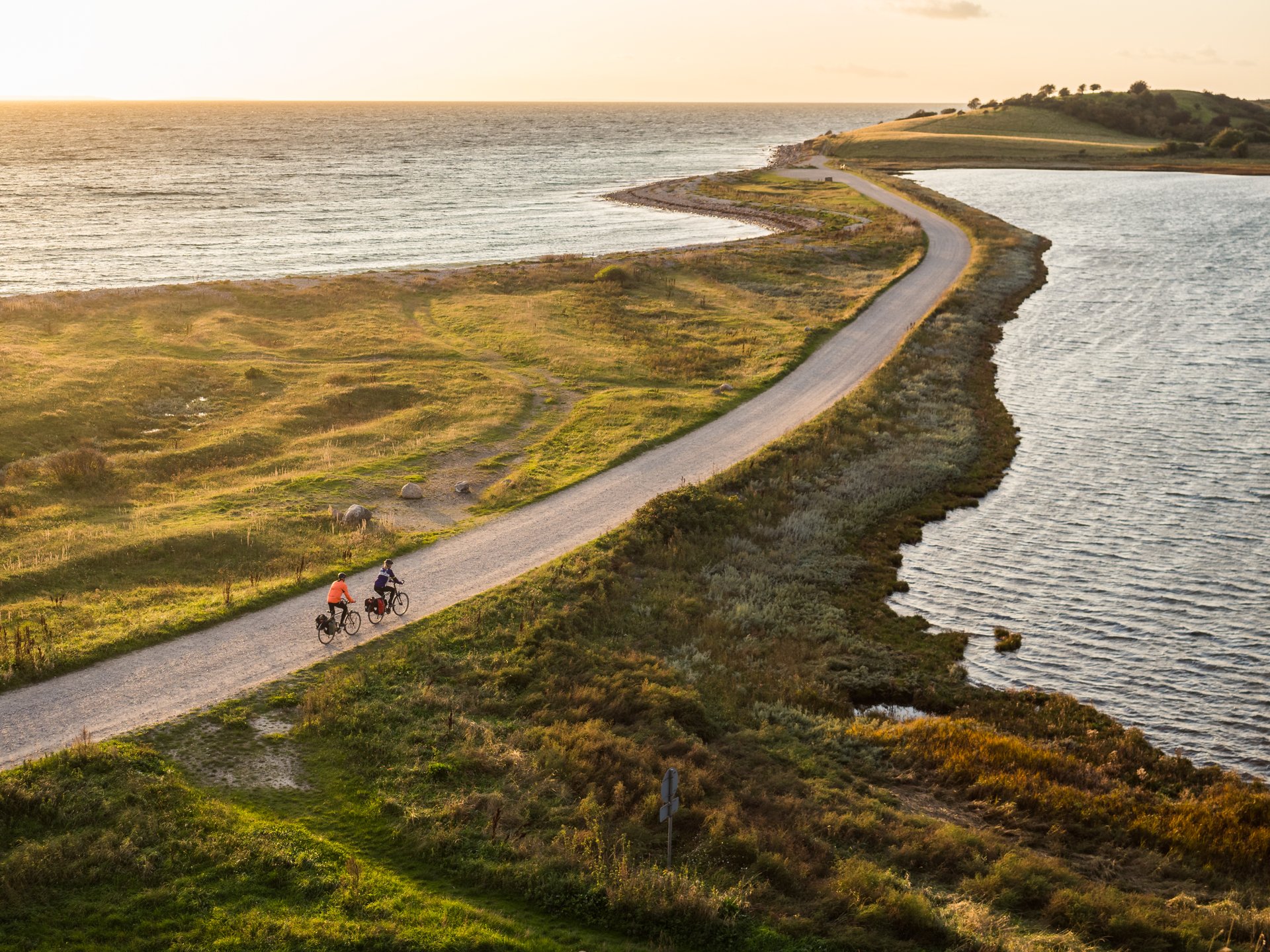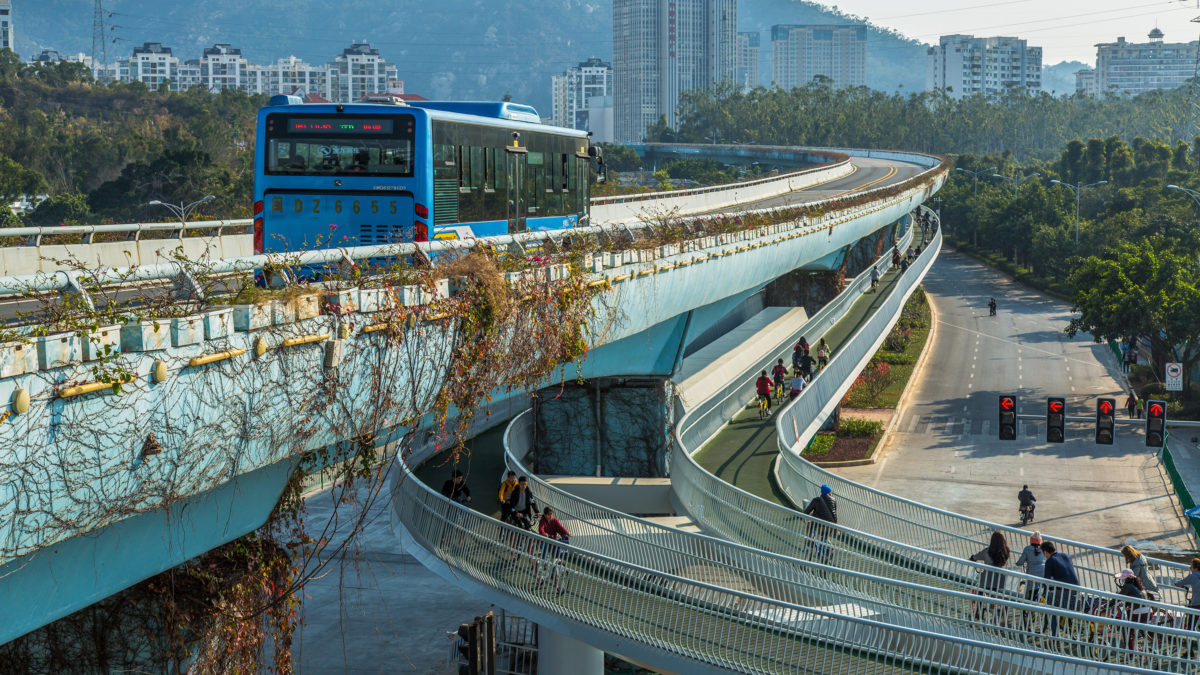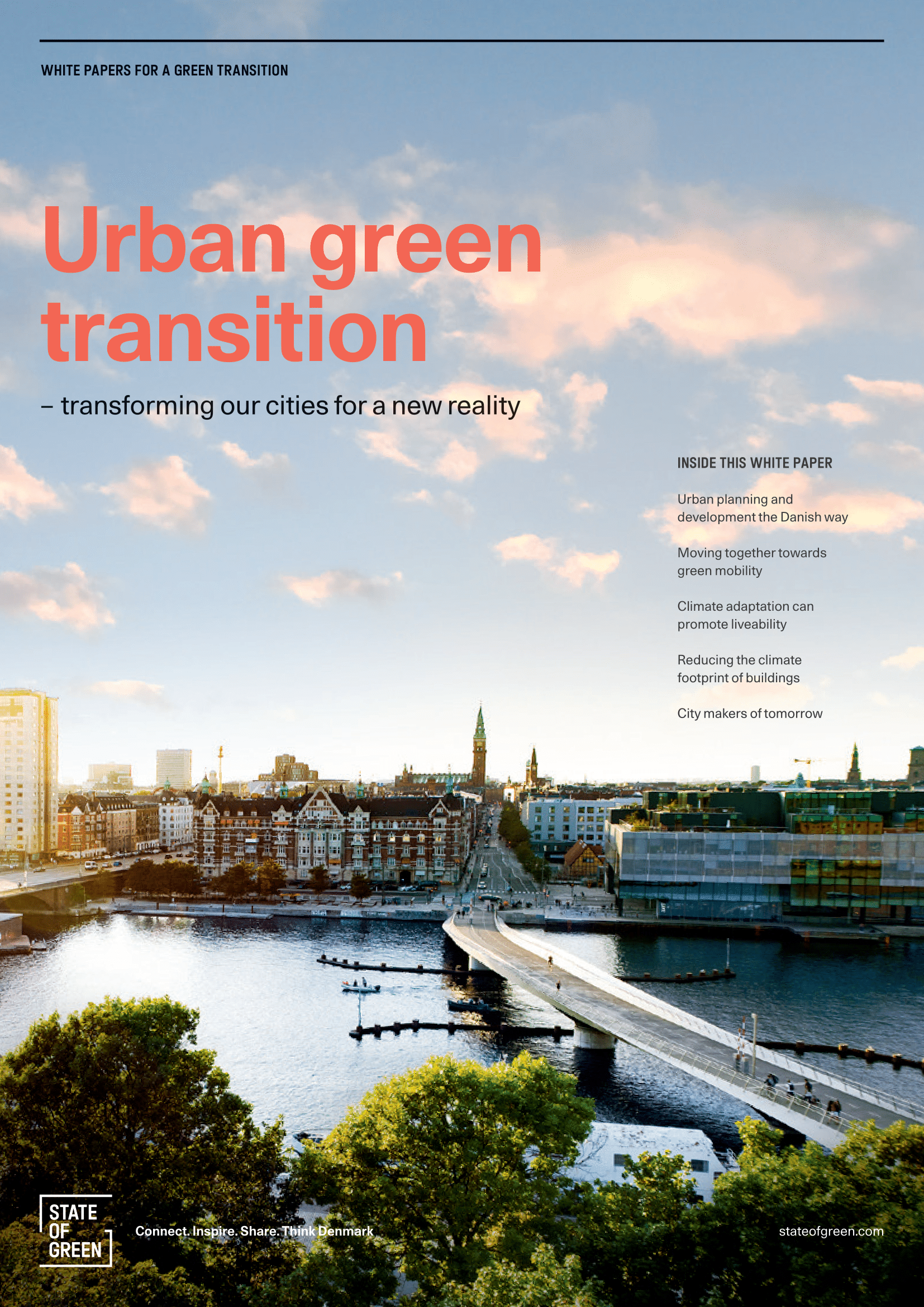News
Urban mobility
Sharing Cycling Secrets from Denmark


CYCLISTS ARE PRICELESS FOR CITIES
By Rune Monberg Dalhof, Danish Cyclists’ Federation
A Danish study shows that cyclists and pedestrians contribute to roughly 50 % of the revenue in retailing in the large cities’ centers and roughly 25 % in the small and medium-sized cities. The bicycle is the preferred means of transportation in city centers, and cyclists visit more shops per trip than car drivers.
The relationship between cycling and commercial life has previously been examined in Copenhagen but not yet in other cities and towns in Denmark. Therefore, the Danish Road Directorate granted funding for such a survey in seven different municipalities in Denmark. The survey was conducted by the consulting company COWI, a member of the Cycling Embassy of Denmark.
“The survey has shown that cyclists and pedestrians contribute to roughly 50 % of the revenue in retailing in the large cities city centers outside of Copenhagen and roughly 25 % in the small and medium-sized cities. It shows that cyclists and pedestrians play an important role for urban life in both the small cities as well as the large ones,“ says Pablo Celis, project manager for Aarhus Cycle City.
The bicycle is the preferred mode of transport in the city center of larger towns. Cyclists and pedestrians are an important factor of an exciting urban life because they move around at a slower pace and in the immediate vicinity of other users of the urban life.
The survey has now tested and proved that cyclists and pedestrians have a significant positive influence on commercial life from spending money in shops, restaurants and other consumer goods and retailing activities in town centers.
- Related news: Copenhageners Obsessed with Biking
Concentrated efforts to make cycling even more present
As many as 89 % of the participants in the survey have less than 2 km to their closest grocery store. This is interesting because large distances are the most important explanation for why people choose not to cycle.
Simultaneously, the study shows that only 11 % of all the participants and 21 % of those of them that use the car have more than 2 km to the nearest grocery store. Despite the large amount of people living within short distance of shopping opportunities, almost 1/3 went by car on their last shopping trip. This demonstrates a need for a general effort to make car drivers see the bike as a good option on short trips. This would also make it easier to park in the town centers.
“We hope that this survey can contribute to reflections about how the cities are organized and how cities can support the use of bicycles in connection with shopping – and hence get more people to bike in Danish cities,“ says Pablo Celis.
- Related news: Rain Makes the Light Go Green for Cyclists in the Danish City of Odense
More info about the survey
The Municipality of Aarhus got funding from the Danish Road Directorate to complete an analysis about the relationship between means of transportation and retail trade. COWI completed the analysis. The municipalities involved are Aarhus, Odense, Aalborg, Kolding, Randers, Horsens, and Ikast-Brande. The survey comprises different types of city and regional configurations. In total, 20 different locations have been analyzed covering city centers and shopping centers.
COWI conducted interviews in 20 different cities and urban areas with roughly 2,200 people. Furthermore, 1,700 people filled out a questionnaire. The questions concerned transportation habits, reasons for choosing their mode of transport, the amount spent on shopping, facilities affecting the choice of bicycles, and numerous other conditions.
CYCLE TRACKS THAT COME TO YOU AS YOU GO
By Lars Gemzøe, Gehl Architects
What is it that makes the Danes cycle so much? Part of it is a coherent network of cycle tracks that enable cyclists to move around in a swift and safe manner.
A fundamental trait of the Danish cycle culture is that people who cycle experience a long list of advantages in their daily activities. It is, quite simply, easier to move around the cities by bike than by any other means of transport; in addition, with a bicycle almost anybody can be mobile of their own accord from childhood to old age. Cyclists can run errands on the way to their destinations, and can stop and talk to others without any problems. No one needs to drive their children to school or after-school activities, because they can get there on their own. In effect, the Danes cycle across their differences in age and income.
The network is the key
The background for all this delightful everyday cycling is that over many years a fine-meshed network of cycle tracks has been constructed along with other measures that prioritise bicycles. It is all easy to use, and cycle tracks aren’t something you need to look for: They come to you as you go.
Perhaps the journey begins in a traffic-calmed residential area where bicycles and cars share the space and move at low speed. The trip continues through a high street, and a cycle track appears, giving comfort and safety as the journey continues. One takes a short cut through a one-way street where bicycles are allowed in both directions. At the next big intersection, cyclists get 5-6 seconds of green time before the motorists, so they can move swiftly and safely across the intersection.
- Related news: 380 Intelligent Traffic Signals for Copenhagen
The Danish model
The advantage of the Danish model is that the cycle tracks are part of a simple and user-friendly system, where the municipality can easily add or extend cycle tracks according to need. The typical cycle track is designed to be the same in its position in the street profile from one street to the next. First comes the footpath with its own curb; on the outside of this is the cycle track also with its own curb; then, the parked cars, followed by the moving traffic. This is the formula of the ”Copenhagen style cycle tracks”, which in recent years have served as an inspiration to both New York and Melbourne, Australia. The cyclists feel safe and have the feel of an invitation-only audience on the cycle tracks because they are segregated from the traffic lanes by a curb.
Surveys of the cycle tracks in Copenhagen from the 1970s to after the turn of the millennium show that every time the municipality has established a cycle track, the number of cyclists in that street increased by 18-20%, and the number of cars fell by 9-10%.
Cycle lanes that were marked with a white stripe on the asphalt in the same placement as the cycle track had no effect on the number of cars, but still resulted in a 5-7% increase in the number of cyclists. During the last ten years, the number of people who cycle in Copenhagen has almost doubled while the number of serious accidents has been cut in half. No wonder the citizens are happy about their cycle tracks—and that the outside world finds them inspiring!
CYCLING GAMES SPREAD ACROSS DENMARK
By Rikke Ravn Faber, Danish Cyclists’ Federation
More and more kindergarten children play games on bicycles and in the near future 10 Danish cities get permanent bicycle playgrounds. The concept of cycling games developed by the Danish Cyclists’ Federation has made significant headway.
Do you want to see something that will make you feel happy? Then look over the fence of a kindergarten where the children play cycling games. If you are lucky, soap bubbles will be whirling through the air while the children zip in and out amongst each other in order to catch them. Deeply concentrated, they cycle with one hand on the handlebars and one in the air. Their eyes sparkle when they succeed with this difficult maneuver - and they often do. Because when they play, the children are better at cycling than they and their parents thought possible.
The campaign “We can bike!” is supposed to ignite a joy of cycling in pre-school kids throughout the whole country. In the early summer of 2015 4,000 children played along. That is twice as many as last year and the plan is to double that again in 2016 because interest from the kindergartens is rising rapidly.
– It is amazing. We can tell that the kindergarten teachers have become aware of the very broad learning children get out of playing together on bikes, says project manager for the campaign, Mai-Britt Aagaard Kristensen.
Playing creates many skills
In all its simplicity cycling games are well-known children’s games that the Danish Cyclists’ Federation has turned into cycling games. The games have turned out to be efficient bicycle training and a strong learning tool matching many of the goals of the institutions’ learning plans.
Zigzagging through obstacles with a mission to be accomplished means that the children become better at controlling the bicycle and their speed. But they also learn to cooperate with each other in solving problems. They raise their pulse. And their senses and motor skills come into play as well. During cycling games the children quickly forget that they are practising something - and then they suddenly develop fast.
– I often meet parents who are extremely proud and surprised at how much their child has learned after only a couple of hours of cycling games, and many get the urge to cycle more with their children, says Mai-Britt Aagaard Kristensen.
- Related news: 10 Danish Municipalities Recieve Grant for Permanent Bicycle Playgrounds
Bicycle playgrounds on the way
The kindergartens each get a package full of ideas and tools to get them started and the Danish Cyclists’ Federation cycling games corps offers inspiration courses for the kindergarten teachers. Since 2013, the Danish Cyclists’ Federation have been running “We can bike!” with support from the fund Oestifterne. In the long run the goal is for the cycling games to become a permanent part of children’s development and fortunately several forces are now pulling in the same direction.
After some years where the number of children cycling has decreased, more and more municipalities are setting the goal that all children must be able to cycle before starting school. And in the coming three years Danish Cyclists’ Federation, with support from the fund Nordeafonden, will establish permanent bicycle playgrounds in 10 Danish cities - with seesaws, bumps and zigzag lanes inviting institutions and families alike to play on bicycles. The 10 playgrounds should be ready by the end of 2017.
About cycling games Children have always played on bicycles. But the concept of cycling games was invented by Danish Cyclists’ Federation in 2008. The goal was to spread the joy of cycling to a new generation and curb the decrease in the number of children cycling. The concept consists of a series of games developed by experts in children and movement. To begin with we published a book on cycling games - today that book has been supplemented by campaigns, bicycle playgrounds and a specialist cycling game corps arranging events and courses.
Play cycling games yourselves
Children down to the age of two can start practising cycling games on a running bike. All you need is a bicycle, an area with no traffic and the inspiration leaflet ‘6 Cycling Games’, which is also available in Spanish and Portuguese on www.cyclingembassy.org.
THE CYCLE SERPTANT
By Anna Garrett, City of Copenhagen
The story behind the City of Copenhagen’s bicycle bridge, the Cycle Serpent, is the story of an overpass that benefits the city space and road users.
Many Copenhageners have tried it. You cycle towards the shopping centre Fisketorvet and want to take a short cut over the bridge Bryggebroen to Islands Brygge to, for example, take a swim in the harbour. Suddenly the cycle lane comes to an end and you have to lug your bike down a load of steps, and cyclists and pedestrians have to share the limited space on the steps that lead from the main entrance of Fisketorvet down to the swimming area of the harbour at Kalvebod Brygge. It is five and a half metres down to the harbour, and until June 2014 walking up and down those steps carrying a bicycle was part of the daily hubbub for 11-12,000 Copenhageners.
Copenhagen Municipality then did something about this, and the solution has become something of an attraction. Next to the steps is now a 235 metre long bicycle bridge. It has been given the appropriate name The Cycle Serpent, as it weaves its way around the glass-fronted buildings on the harbour front level with the first floor. The bridge is exclusively for bicycles, and pedestrians no longer need to fight for space with the cyclists on Havneholmen.
The Cycle Serpent’s surface is orange to the delight of onlookers and cyclists. It is an artificial surface dusted with quartz sand dyed orange, which gives traction so cyclists won’t slide, and which gives the Serpent a special characteristic. It is four metres wide, which makes it possible to cycle side-by-side and still have room for those overtaking – even on the bends.
- Related news: Making Politicians Invest in Bike Infrastructure
Architects with ambitions
The Cycle Serpent was drawn up by Dissing+Weitling Architects, who also designed Bryggebroen. The connection wasn’t originally thought of as a bridge, just more or less a ramp for bicycles. But Dissing+Weitling surprised with their ambitious bridge design, and in 2013 they won Copenhagen Municipality’s Push-Up prize for their initiative in designing a solution that exceeded all expectations. The bridge cost 38 million Danish kroner, 6 million of which came in funding from the state.
After the design phase, which began in 2010, construction started at the end of 2012. At that time, the bridge was expected to be finished in the second half of 2013, but the project was delayed primarily because the steel for sections of the bridge and the ramp came by freighter all the way from Shanghai. The Cycle Serpent could finally be opened officially on June 28th 2014, where Mayor of the city’s Techical and Environmental Administration, Morten Kabell, took followers on a cycle safari, and there was salsa dancing, crossfit and a treasure hunt at Fisketorvet where there is now a whole new city space now the bicycle traffic uses The Cycle Serpent.
The world’s best cycling city has no missing links
The establishment of The Cycle Serpent is one part of Copenhagen Municipality’s goal to become the world’s best city for cycling. Copenhagen’s network of cycle lanes must be connected so that the bicycle becomes an even easier and faster choice for the people of Copenhagen to get around the city. Missing links in the network should be removed by, for example, establishing new bicycle lanes, bridges, tunnels and throughways to make road junctions safer.
The municipality estimates that the time saved by cyclists due to The Cycle Serpent amounts to more than 5 million Danish kroner. On top of that, after The Cycle Serpent opened, the number of cycle journerys across the harbour on Bryggebroen rose by approx. 30 %. That means that The Cycle Serpent will have paid for itself in 8 years, based on timesaving alone.
DOWNLOAD NEW WHITE PAPER ON SUSTAINABLE TRANSPORTATION
- Download white paper: Sustainable Urban Transportation
Source: The Cycling Embassy of Denmark
You should consider reading
publications
Urban planning and development
+20















